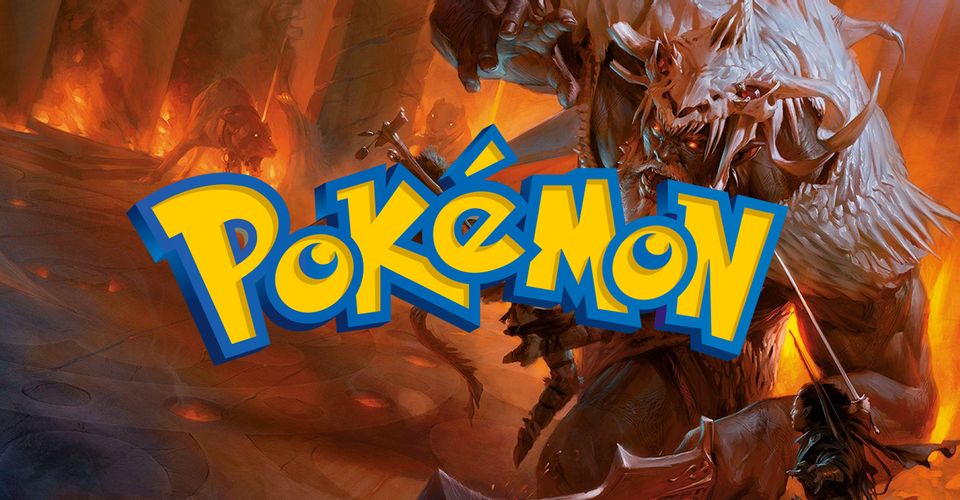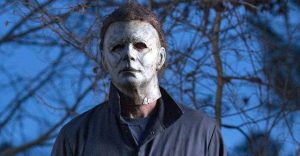Pokémon D&D Campaign Ideas & Mechanics

There are many ways to homebrew campaigns in Dungeons & Dragons. These unofficial adventures allow players to take the rules and structure of the popular tabletop RPG, and apply them to other favorite stories or worlds. Players have created homebrew campaigns for Lord of the Rings, Harry Potter, and the Percy Jackson series among many others. Each campaign offers a way to explore these stories in a new way, and with the immersion of a D&D campaign. Video game settings are also popular for homebrew campaigns, and the Pokémon game series could offer a wide variety of settings.
To create a homebrew campaign for the Pokémon games series, players will need to decide which aspects of the trainer journey will be converted to mesh with the rules of D&D. For example, in the Pokémon games, a trainer can carry six Pokémon at any time. However, in a D&D homebrew, this might be limited to a single companion that levels up, instead of leveling the player’s character. This would help simplify battles and remove the hassle of having a character sheet for every Pokémon the player is carrying.
The Pokémon series also lacks many of the elements found in a Dungeons & Dragons campaign. The Pokémon universe has a much greater reliance on technology like PCs, Pokécenters, and devices like the Pokédex. Because of this, the DM for a Pokémon homebrew will need to decide which of these elements will be present in the campaign, and how they can replace existing mechanics. Below are some ideas to help flesh out a Pokémon homebrew for a D&D campaign.
Pokémon D&D Homebrew Campaign – Picking A Region To Play In

There are 8 regions in the Pokémon series that players could choose for a tabletop setting. Each region contains unique towns to travel between and an antagonist group that could be used as the primary villain for the story. If the campaign is set in the Kanto region, players will battle Team Rocket, and likely take on Giovanni as their final battle. However, if the story takes place in Sword and Shield’s Galar region, the main villain would be Rose, and the DM could mislead players with a red-herring villain for a portion of the campaign.
However, this also poses a problem for fans of the Pokémon games, who already know how the general story will unfold. Because of this, the DM may want to consider rewriting the motivations or original storyline provided by the Pokémon games, to give players fresh challenges and prevent plot points from becoming monotonous. This could be done by giving Team Rocket’s Giovanni new motivations for stealing Pokémon or even introducing a new villain that is controlling the original main antagonist of the region.
Pokémon D&D Homebrew Campaign – How To Use D&D Classes

Picking a class is one of the most exciting parts of preparing for a D&D campaign. However, a Pokémon homebrew would likely change how classes benefit a player. Instead of the traditional Fighters, Wizards, and Warlocks of a standard D&D campaign, players could pick between options like Trainer, Pokémon Professor, Breeder, or Gym Leader among other careers seen in the Pokémon plotlines. Instead of giving the character themselves a boost during an encounter, these classes could also give players certain skills or buffs that benefit their Pokémon partner. For example, a player who has picked the Pokémon Trainer class could get an advantage when rolling for initiative, or their Pokémon could learn an additional move. Meanwhile, a Pokémon Professor could get boosts in Intelligence, History, and Medicine skills.
If each player has a Pokémon companion traveling with them, it is also possible those Pokémon’s types could become classes. For example, the Fighting-type Pokémon could be considered Dungeons & Dragons’ Fighter class, and gain certain boons like d6 additional damage per attack, whereas a Fairy-type could be considered a Wizard or Cleric, and have the ability to use minor healing moves as a Bonus Action. Pokémon with dual types could even have the ability to multi-class, gaining the benefits of both types they possess.
Pokémon D&D Homebrew Campaign – Ideas For Encounters & Combat

Combat in Dungeons & Dragons can include one enemy to the entire party, or several enemies the party must attack one-by-one as a group, or split up to take out. Because of this, Pokémon’s combat style in battles would actually translate well for a D&D campaign. Using the Dungeons & Dragons Monster Manual, players could modify states for each wild Pokémon encounter, or for battles against enemy trainers and their Pokémon. Evolved Pokémon could have a higher challenge rating than base evolutions, and the DM could scatter Legendary and Mythical Pokémon throughout the map to act as special encounters.
The DM could also instigate weather conditions seen in the Pokémon series, with sunny weather boosting Fire-type moves and weakening Water-types, or Hail buffeting any Pokémon that’s susceptible. This would increase the challenge of combat, and require players to pay careful attention to weather conditions before heading out to explore a route or move on to the next plot objective.
While many facets of the Pokémon series would make a good Dungeons & Dragons homebrew campaign, the biggest challenge for DMs would be integrating catch mechanics. Because a full team of 6 Pokémon for each party member would likely overwhelm both the DM and the players, having a limited number of Pokémon for each player would be a good solution. However, this directly contradicts the purpose of the Pokémon games, which is to catch every Pokémon species available in the region.
While some players may find a limited party dynamic a way to build a special relationship with one Pokémon, it could also potentially remove one of the key mechanics players enjoy in the Pokémon series. To help with this, DMs could consider allowing players to capture new Pokémon, and switch out their current companion for a stored option. Doing so could potentially require players to spend time training and raising the level of their new companion, or the DM could allow newly caught Pokémon to come in at the level of the player’s current companion.
There are also many other mechanics from the Pokémon games that could be compatible with D&D-style gameplay. These include Pokémon mini-games like Contests, aiding NPCs in side quests, or exploring sunken ships and ruins. With so many options, Pokémon fans would likely be able to embark on numerous Dungeons & Dragons-style adventures with their party and creature companions.
About The Author

















